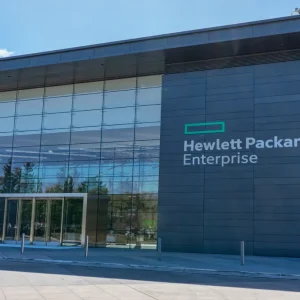
Xchanging, a CSC company that provides insurance and business process, and technologies around data integration, insurance software, infrastructure management, and more, looked to improve its internal processes with a change of technology.
The technology it selected was Workfront, a software company that provides web-based work management and project management software.

CBR’s James Nunns spoke to Stuart Fiszzon, Head of the Office of the CIO.
JN: How did you come to the decision to use Workfront?
SF: “The lack of well-structured internal processes made us realise our current model wasn’t enabling the business to grow and develop. The Group Technology and Change (GTC) team originally had long processes for plans & tracked tasks in spreadsheets. There were hour long status meetings required before approvals could be granted on projects and several days per month were spent on basic status reports. Our time was not being used wisely, which affected our ability to produce work efficiently.
“In 2014, we undertook a large-scale enterprise management initiative to establish change management as a core IT competency. Workfront was the perfect solution to help drive this change within our company for many reasons.
“The comprehensive collaborative software meant that the entire team could work together using the same exact framework. The portfolio management, resource management, and multiple scheduling paths also meant that team resources were correctly established at the beginning of projects.

“Forecasting time gives project managers a holistic view of all projects and helps us understand when we need more or less time from contractors. Tracking this on an ongoing basis enables us to meet deadlines and work demands, while ensuring we are using all available resources effectively before asking for more.
“Last, but certainly not least, Workfront’s issue tracking system and real-time reporting gave us the ability to be constantly aware of any problems that might arise, resulting in quick responses.”
JN: How long did the rollout take?
SF: “A lot of time went into understanding people’s requirements, mapping existing processes, tidying up and organising files and folder structures, and plotting out what we wanted to achieve in the short and long term.
“This was all done before Workfront was configured. Once this was set up, the Workfront team spent two days reviewing it to get an understanding of what consultancy we would need.
“The main challenge was training both our full-time and flexible contract staff in both the United Kingdom and India. This came at an intensive time across the entire business and we needed to make sure it was done as smoothly as possible.
“The Workfront team were on site for 25 days to help with the initial set-up. Workfront carried out intensive training to help us input all the data and setup services to streamline the processes, and it automatically reduced our dependency on status meetings and emails.
“From overlaying our framework to the software, we immediately saw ways to cut down time spent on particular tasks in order to work more efficiently.
“We then configured a base system and used the implementation project for Workfront as our pilot project to make sure we followed the processes to the letter – 100% of the time, 100% in Workfront. Once we were comfortable with this process, we introduced more pilot projects —some new and some older projects that were migrated over.
“During this we were pulling together ‘cheat sheet’ presentations that gave all users access to a step-by-step guide through each function and feature.
“We spent 3 months on this process and then set a date by which everything needed to be done in Workfront.”
JN: How has it changed the way you work?
SF: “Within 3 months of implementing Workfront we reduced meeting time from 6 hours to 30 minutes. Something that now takes five minutes in Workfront was taking an hour in person. We have six different rounds of approvals for every project, with up to 10 approvers needed at each stage. That’s about sixty hours of work condensed into 5 hours, which is a huge amount of time that can be used more effectively.
“Project set up time has been cut from 24 hours to seconds by using templates after simplifying the onerous manual process of setting up a project.
“The team now also has greater visibility into projects, meaning we can manage and monitor resources, enabling us to increase outputs. We can now plan the time needed on each project ahead for both our fulltime and flexi staff, ensuring we aren’t over estimating time needed.
“It allows us to plan more efficiently and apply additional resources in real time if needed, moving us from using ring-fenced resources per project to using single resources across multiple projects.

JN: Do you consider the technology to have given you a competitive edge?
SF: “With all the changes internally, we are working more efficiently and increasing our outputs. We now have the ability to complete more projects in any given period using the same budget and have inherently increased the quality of their respective deliveries.
“We’ve also gained the trust of our stakeholders through the transparency of our delivery processes, leading to a willingness to embark on more change initiatives, which in turn is improving the capability of the business and reducing the cost of legacy products or process overhead.”
JN: How quickly has it been adopted throughout the business?
SF: “We initially began with 100 licenses and now use 400 licences across all GTC projects. At the beginning we slowly increased the number of licenses to meet the demand at a cost ‘per seat’.
“We then made a large jump from 275 to 400 licences in February of this year, but as off today we currently use 345 of those with over 773 people having access to the system.”






